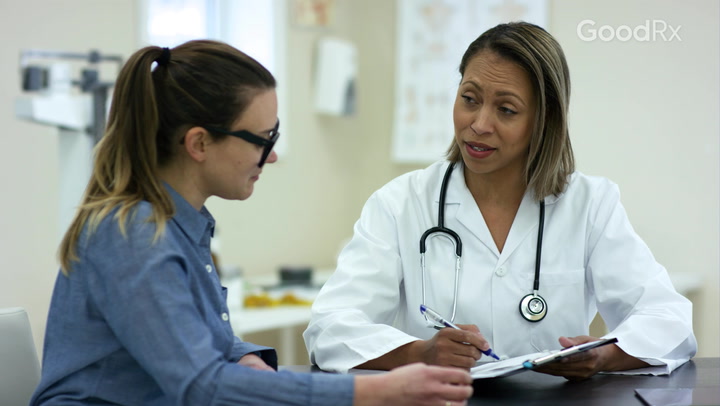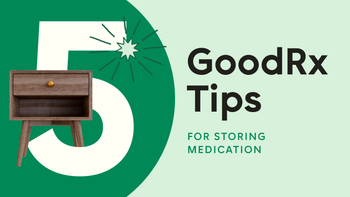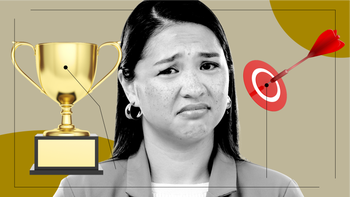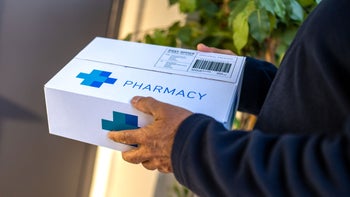
How to Cut a Pill in Half: Important Instructions and Dosage Information
Key takeaways:
There are many pills that can be cut in half. If your tablet has a score line on it, typically it’s OK to split it.
Extended-release tablets, capsules, and pills with special coatings on the outside usually can’t be split or opened.
Always check with a pharmacist before splitting any pills. They can tell you if cutting your pill is safe and give you tips on how to cut a pill in half.
Table of contents
There are a variety of reasons people want to split their pills. Some people have trouble swallowing pills that are too big. Others cut pills in half because their prescriber wants them to slightly raise or lower their current dose. People also split pills to save money on medication.
Whatever the reason, cutting pills in half is common. But not all pills should be split. Sometimes, cutting your pill in half can completely change how the medication will work. Read on to learn how to cut pills in half, which types of medications are safe to split, and which ones you should avoid splitting.
How to cut pills in half
The first step in cutting tablets is to look for a score. A score is an indented line down the center of one or both sides of the pill. Scored tablets are generally safe to split or cut along that line.
Search and compare options
The most accurate way to cut a scored tablet is to use a pill splitter. Pill splitters are inexpensive devices carried by most pharmacies. They are usually plastic boxes with a small metal blade inside.
Here’s how to cut a pill in half using a pill splitter:
Wash and fully dry your hands before handling your pills.
Gather your pill splitter and the medication you’ll be splitting. Sit at a table or other flat, hard surface.
Open your pill splitter and make sure it’s free of any powder or pieces from previously cut tablets.
Place your scored tablet in the pill splitter. Line up the score line with the blade. Be careful not to touch the blade with your fingers, as it can be sharp.
Close the pill splitter and press firmly until the blade has cut your scored tablet fully in half.
Take your half-tablet as directed. Store the other half in a sealed container, such as a pill box, away from light and moisture.
Good to know: It’s not recommended to split your entire supply of tablets ahead of time. Split tablets are more susceptible to environmental factors such as heat and humidity. So they don’t store well for longer periods of time. Instead, you should only split one pill at a time and finish both halves before cutting your next one.
Can you cut pills in half with a knife?
It’s generally not recommended to use a knife to split pills. Even scored tablets can be difficult to split into two perfect halves with a knife. It’s also very easy to cut yourself if you use a knife to cut pills in half. A pharmacist or other healthcare professional can recommend the best way to cut your scored tablet if it’s too large to fit into a standard pill splitter.
Can you cut your pills into even smaller sizes?
You should only split your pills along the score line(s) unless directed otherwise by a healthcare professional. Most splittable pills are only designed to be cut in half. Many tablets will break unevenly or crumble if you cut them too small or into too many pieces. Always check with your pharmacist about how many pieces you can split your medication into.
Common pills that can be safely cut in half
Many tablets are safe to split. As mentioned earlier, a score line is usually a good clue that your pill is safe to cut. You can also check the “How Supplied” section of a prescription medication’s package insert (labeling). This section should state if a medication is FDA approved to split.
When in doubt, ask your pharmacist. Some tablets without a score line may be safe to cut while others need to be taken whole. Let’s go through some common medications that are safe to split.
The “Do Not Crush” list: Crushing pills is another tactic people use when it’s tough to swallow pills. But there are a number of medications that should never be crushed.
Storing pills after cutting them: After splitting pills, you should store them in a sealed container. Read about this and more pharmacist-backed tips for storing medications.
When to store pills in the original container: Some medications are very sensitive to light and moisture. These medications should be stored in their original containers after bringing them home.
Antidepressants that can be cut in half
Many antidepressant tablets are safe to split. Common examples include:
Citalopram (Celexa)
Escitalopram (Lexapro)
Fluvoxamine (Luvox)
Paroxetine (Paxil)
Sertraline (Zoloft)
High blood pressure medications that can be cut in half
Many medications that help lower blood pressure can also be cut in half. Examples include:
Amlodipine (Norvasc)
Lisinopril (Zestril)
Losartan (Cozaar)
Metoprolol succinate (Toprol XL) — safe to cut even though it’s a long-acting tablet
Metoprolol tartrate (Lopressor)
Valsartan (Diovan)
Cholesterol medications that can be cut in half
Many cholesterol medications can also be cut in half. Some examples include:
Atorvastatin (Lipitor)
Gemfibrozil (Lopid)
Rosuvastatin (Crestor)
Simvastatin (Zocor)
Erectile dysfunction medications that can be cut in half
The most common erectile dysfunction medications can be safely split. This includes:
Sildenafil (Viagra)
Tadalafil (Cialis)
Diabetes medications that can be cut in half
Some tablets used to manage Type 2 diabetes can be cut in half as well. Examples include:
Other common medications that can be cut in half
There are many other medications for other conditions that can be split into two. Some of the most popular examples include:
Acetaminophen (Tylenol)
Levothyroxine tablets (Euthyrox, Synthroid, and others) — it’s not safe to open brand Tirosint capsules
Most prednisone tablets — it’s not safe to split Rayos tablets (or its generic version)
Warfarin (Coumadin, Jantoven)
This is not an exhaustive list — there are many other medications that can be cut in half. You should always check with your pharmacist before splitting any tablets.
Pills that should never be cut in half
Some medications should never be cut or crushed. Medications that can’t be split in half are usually designed to release in the body in a certain way. These are called modified-release dosage forms. A common example of this is an extended-release (ER or XR) tablet. Many modified-release tablets also have a special coating on the outside to help release the medication slowly or protect the stomach.
Cutting these types of pills will make the medication come out of the tablet too fast or too early. This can make a medication less effective or raise the risk of side effects. But, as mentioned above with metoprolol succinate, this isn’t always true. That’s why it’s a good idea to double-check with your pharmacist before cutting pills in half.
Here is a list of common modified-release medications that cannot be split:
Enteric-coated aspirin (also called safety-coated)
Bupropion ER (Wellbutrin XL, Forfivo XL, Aplenzin)
Pantoprazole (Protonix) — This is a delayed-release tablet even though it has no letters following its name.
Paroxetine ER (Paxil CR)
Venlafaxine ER (Effexor XR)
Verapamil ER (Verelan, Verelan PM)
Capsules often can’t be opened either. Similar to ER tablets, some capsules are designed to release medications at a certain time or location in the body. However, there are a number of capsules that you are allowed to open and sprinkle on soft foods, such as applesauce. It’s best to have your pharmacist double-check whether your capsule can be opened or not.
Is half a tablet half a dose?
If you’re taking a scored tablet, rest assured that half a tablet should be about half the dose of a whole tablet. Pills with a score line have been evaluated by the FDA to contain equal amounts of medication in both halves.
But talk to a pharmacist before cutting tablets that aren’t scored. While cutting a pill in half lowers the dosage, unscored tablets may not have medication equally distributed inside. A pharmacist can help you determine if half a tablet is half a dose for pills without a score line.
Can cutting my pills in half help you save on your medications?
If you’re filling your prescriptions through an insurance plan, splitting pills may not make a difference in the cost of your medications. Many insurance plans use a tier system for determining copays. Generic medications typically have the lowest copay, and brand-name medications have higher copays. It’s common for a month’s worth of medication to cost the same no matter what dose you’re prescribed.
If you’re paying out of pocket for your medication, cutting pills in half could save you money. Buying half the number of pills of a higher dose generally costs less. But sometimes, higher-dose pills can be much more expensive than lower-dose pills.
For example, let’s compare the costs of tadalafil (generic Cialis). The average retail cost of thirty 5 mg tablets is about $789.95. If you were to buy 15 tablets of the 10 mg dose to split them, the average cost would be much higher — about $830.37.
It’s a good idea to compare the costs of different doses of your medication to see what would save you the most money.
What else you should know about cutting pills in half
Splitting pills can cause more problems in some cases. Keep the following in mind when it comes to cutting pills in half:
It’s possible for people who are prescribed a higher dose pill and told to take half, to forget to do so. This can result in taking a double dose of medication.
Cutting pills in half requires dexterity. Doing so is not recommended for people with vision problems or mobility issues that affect the hands, such as arthritis.
As mentioned earlier, medication isn’t always distributed evenly throughout unscored tablets. But if you’ve been told your unscored tablets are OK to split, it’s a good idea to take one half of the tablet for one dose and the other half for the next dose. This will help make sure you get the right dose more consistently.
The bottom line
Cutting pills in half can be helpful for people with swallowing issues or to help people save money. But splitting pills isn’t always safe to do. You typically shouldn’t split pills that release medication slowly or have a special coating on the outside. If your tablet has a score line, it’s most likely safe to cut it in half. Always double-check with your pharmacist before splitting pills, so they can let you know for sure if this is OK and give you tips for how to cut your pills in half.
Why trust our experts?


References
Grissinger, M. (2010). Tablet splitting—only if you ‘half’ to. Pharmacy and Therapeutics.
U.S. Food and Drug Administration. (2013). Tablet splitting.
Was this page helpful?
Related Articles
Browse medications
View AllResearch prescriptions and over-the-counter medications from A to Z, compare drug prices, and start saving.

























